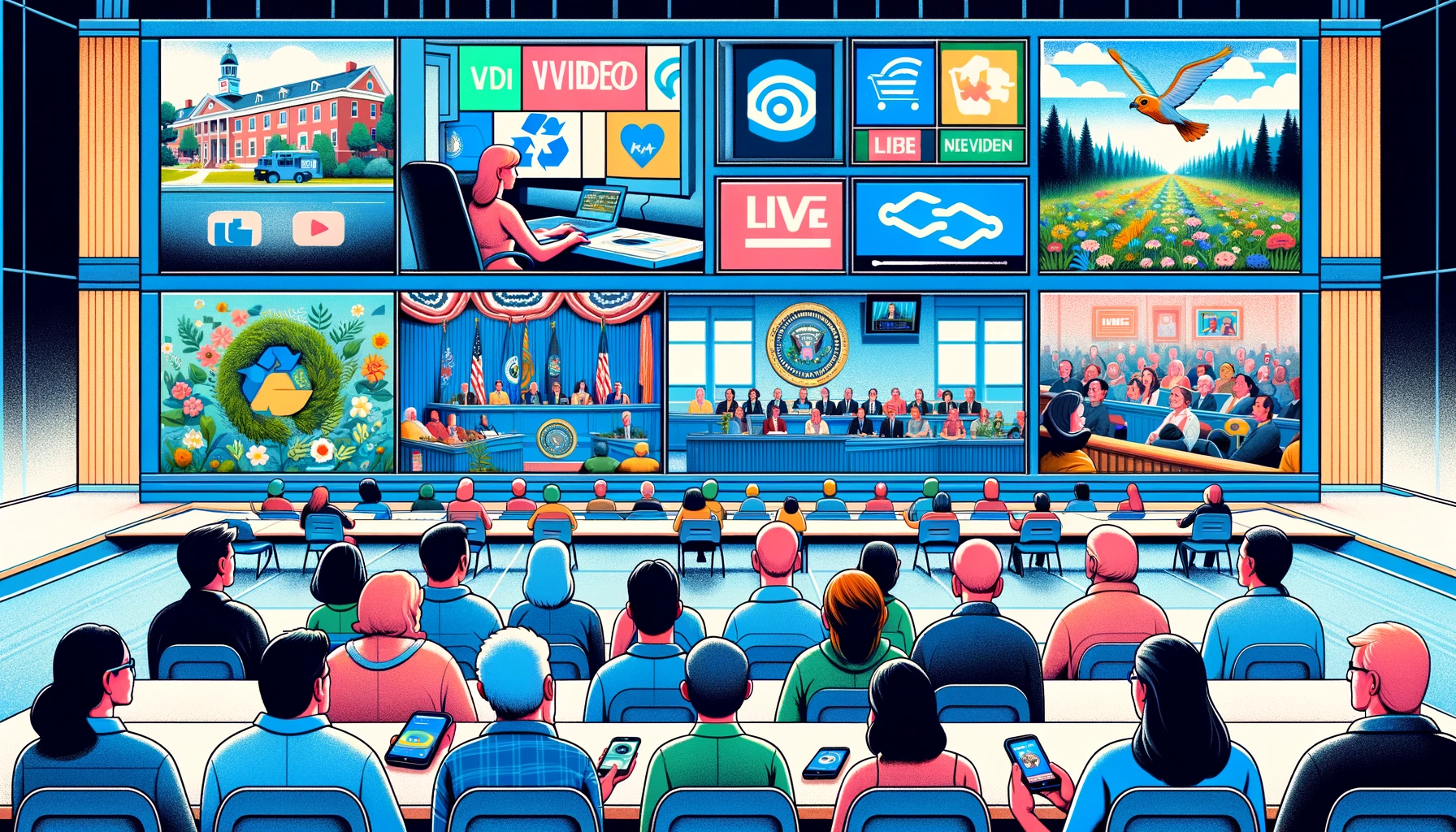Empowering Public Service: Commercial Video Programming for Government Institutions
In today’s digital age, commercial video programming for government institutions has emerged as a transformative tool for enhancing public engagement and delivering critical information effectively. The integration of dynamic video content into the communication strategies of government entities can significantly elevate the quality of public service.
Government institutions are constantly seeking innovative methods to disseminate information, educate citizens, and entertain audiences in waiting areas or during events. Commercial video programming steps in as a versatile solution, offering a wide array of content tailored to the needs of the public sector.
This comprehensive guide delves into the ways in which commercial video programming supports government organizations. We will explore the benefits, showcase case studies, and highlight success stories from institutions that have successfully integrated video programming into their operations.
Enhancing Communication with Video Programming
Informative Content Delivery
One of the primary advantages of utilizing commercial video programming is the ability to convey complex information in an accessible and engaging format. Videos can simplify intricate topics, making them understandable for a broad audience. This is particularly beneficial for government agencies tasked with educating the public on policies, procedures, and services.
Public Awareness Campaigns
Video programming can play a pivotal role in public awareness campaigns. By crafting compelling narratives and utilizing high-quality visuals, government institutions can effectively spread messages on health, safety, and community welfare. These campaigns have a higher chance of resonating with the audience when delivered through video.
Emergency Broadcasting
In times of crisis, the swift and clear dissemination of information can save lives. Government institutions leverage commercial video programming to broadcast emergency alerts and critical updates. The visual and auditory nature of video ensures that important messages are noticed and understood quickly by the public.
Entertainment Solutions for Public Spaces
Enhancing Waiting Areas
Government buildings often have areas where citizens wait for services. By incorporating commercial video programming, these spaces can be transformed into more pleasant and informative environments. A curated selection of entertainment and informational content can reduce perceived wait times and improve overall visitor satisfaction.
Public Events and Gatherings
During public events, video programming can provide entertainment and information to attendees. Whether it’s a cultural celebration or a civic meeting, videos can be used to showcase highlights, provide live feeds, or display relevant information, thus enhancing the event experience for participants.
Case Studies and Success Stories
Local Government Outreach
Consider the case of a local municipality that implemented commercial video programming to inform residents about recycling initiatives. Through a series of engaging videos displayed at various community centers, the municipality saw a significant increase in recycling rates and public participation in environmental programs.
National Health Campaigns
On a larger scale, a national health department used video programming to promote vaccination awareness. The campaign featured testimonials, expert interviews, and animation to explain the benefits of vaccines. The videos were distributed across multiple platforms, resulting in higher vaccination uptake and public engagement.
Streamlining Agency Communications
A federal agency revamped its internal communication by introducing a video channel for staff training and updates. This initiative led to improved knowledge retention, higher employee engagement, and a more cohesive organizational culture.
Implementing Video Programming Effectively
Content Strategy and Planning
To maximize the impact of video programming, government institutions must develop a comprehensive content strategy. This involves identifying target audiences, defining key messages, and planning a content calendar that aligns with public service goals and events.
Technical Considerations
It’s also crucial to address technical aspects, such as the choice of platforms, video quality standards, and accessibility features. Ensuring that video content is easily accessible to individuals with disabilities is not only a legal requirement but also an ethical imperative.
Measuring Impact and Engagement
Finally, the success of video programming initiatives should be measured through analytics and feedback. Tracking viewer engagement, understanding audience preferences, and assessing the effectiveness of different types of content can inform future programming decisions.
Commercial video programming for government institutions holds the potential to revolutionize how public services are delivered and perceived. By harnessing the power of video, government entities can foster a more informed, engaged, and satisfied citizenry.
Key Takeaways
Government institutions that adopt commercial video programming stand to benefit from improved communication, increased public awareness, and enhanced service experiences. The case studies presented serve as a testament to the effectiveness of video as a medium for public engagement.
As we look to the future, the role of video in public service is poised to grow even further. Government agencies that stay ahead of the curve by embracing innovative video solutions will continue to lead in delivering exceptional public service.








